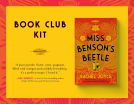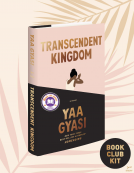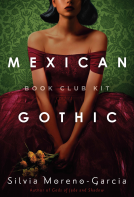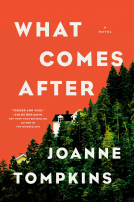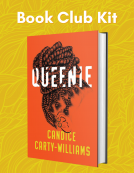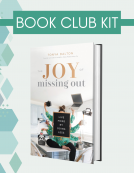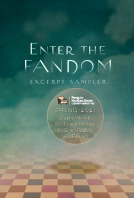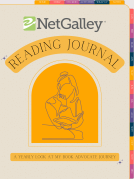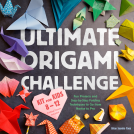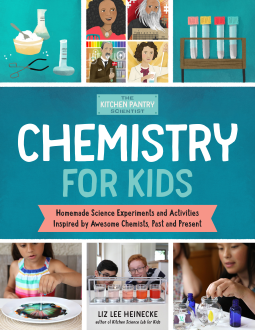
The Kitchen Pantry Scientist Chemistry for Kids
Science Experiments and Activities Inspired by Awesome Chemists, Past and Present; with 25 Illustrated Biographies of Amazing Scientists from Around the World
by Liz Lee Heinecke
This title was previously available on NetGalley and is now archived.
Send NetGalley books directly to your Kindle or Kindle app
1
To read on a Kindle or Kindle app, please add kindle@netgalley.com as an approved email address to receive files in your Amazon account. Click here for step-by-step instructions.
2
Also find your Kindle email address within your Amazon account, and enter it here.
Pub Date May 05 2020 | Archive Date May 06 2020
Quarto Publishing Group – Quarry | Quarry Books
Talking about this book? Use #TheKitchenPantryScientistChemistryforKids #NetGalley. More hashtag tips!
Description
* 2021 NSTA-CBC Outstanding Science Trade Book
* 2021 EUREKA! Nonfiction Children’s Honor Book
Aspiring young chemists will discover an amazing group of role models and memorable experiments in Chemistry for Kids, the debut book of The Kitchen Pantry Scientist series.
Replicate a chemical reaction similar to one Marie Curie used to purify radioactive elements. Distill perfume using a method created in ancient Mesopotamia by a woman named Tapputi.
This engaging guide offers a series of snapshots of 25 scientists famous for their work with chemistry, from ancient history through today. Each lab tells the story of a scientist along with some background about the importance of their work, and a description of where it is still being used or reflected in today’s world.
A step-by-step illustrated experiment paired with each story offers kids a hands-on opportunity for exploring concepts the scientists pursued, or are working on today. Experiments range from very simple projects using materials you probably already have on hand, to more complicated ones that may require a few inexpensive items you can purchase online. Just a few of the incredible people and scientific concepts you’ll explore:
Galen (b. 129 AD)
Make soap from soap base, oil, and citrus peels.
Modern application: medical disinfectants
Joseph Priestly (b. 1733)
Carbonate a beverage using CO2 from yeast or baking soda and vinegar mixture.
Modern application: soda fountains
Alessandra Volta (b. 1745)
Make a battery using a series of lemons and use it to light an LED.
Modern application: car battery
Tu Youyou (b. 1930)
Extract compounds from plants.
Modern application: pharmaceuticals and cosmetics
People have been tinkering with chemistry for thousands of years. Whether out of curiosity or by necessity, Homo sapiens have long loved to play with fire: mixing and boiling concoctions to see what interesting, beautiful, and useful amalgamations they could create. Early humans ground pigments to create durable paint for cave walls, and over the next 70 thousand years or so as civilizations took hold around the globe, people learned to make better medicines and discovered how to extract, mix, and smelt metals for cooking vessels, weapons, and jewelry. Early chemists distilled perfume, made soap, and perfected natural inks and dyes.
Modern chemistry was born around 250 years ago, when measurement, mathematics, and the scientific method were officially applied to experimentation. In 1896, after the first draft of the periodic table was published, scientists rushed to fill in the blanks. The elemental discoveries that followed gave scientists the tools to visualize the building blocks of matter for the first time in history, and they proceeded to deconstruct the atom. Since then, discovery has accelerated at an unprecedented rate. At times, modern chemistry and its creations have caused heartbreaking, unthinkable harm, but more often than not, it makes our lives better.
With this fascinating, hands-on exploration of the history of chemistry, inspire the next generation of great scientists.
Dig into even more incredible science history from The Kitchen Pantry Scientist series with: Biology for Kids, Physics for Kids, Math for Kids, and Ecology for Kids.
Available Editions
| EDITION | Other Format |
| ISBN | 9781631598302 |
| PRICE | $19.99 (USD) |
| PAGES | 128 |
Average rating from 23 members
Featured Reviews
Full review to be published online in late May.
THE KITCHEN PANTRY SCIENTIST: CHEMISTRY FOR KIDS is a nice introduction to experiments anyone can do with things they have on hand in their own kitchen or house. I look forward to trying out more of these interesting little experiments. I especially enjoyed the small biographies included in the book. I’ve already finished reading all of those.
 Emily M, Librarian
Emily M, Librarian
I received a free digital review copy through NetGalley. This is a cool combo of history and science. Each experiment is connected to a scientist from history.
 Media/Journalist 16509
Media/Journalist 16509
This is a brilliant way to do a science book for kids -- kids read a short biography of a scientist in history with a fun illustration of the person, and then do a science experiment based on the scientist's discoveries. Many of the materials are things you find around the house but you will need to purchase some things such as pourable soap kits, alligator clips, water dispensers and a color-reading smart phone app. A resource supply list is provided at the back.
There is great diversity in the scientists, and there are probably more women than men are featured. The scientists start in ancient Mesopotamia with fragrance distillation and learning about a woman named Tapputi-Bilatikallim around 1200 BC, and go right through to present day with a scientist named Raychelle Burks and colormetric sensors. Twenty-five scientists and experiments are featured in all. Topics include the pH scale, DNA, dispersion of environmental contaminants (Rachel Carson of Silent Spring), olfactory chemistry, surface tension, synthetic dyes, carbonation, oxidation, batteries (the lemon battery experiment), medicinal plant compounds (based on Nobel Prize winning Chinese scientist Tu Youyou, who studied ancient Chinese herbal remedies and discovered that wormwood would kill malaria even though modern experiments seemed to say it didn't work -- because she realized in the traditional recipes it was never boiled), and so on.
Experiments reflect the nature of the discovery but change the details. For instance, in the herbal remedy experiment kids will simply gather aloe vera gel from leaves to use as a sunburn remedy. Color photos of kids doing the steps are provided for every experiment.
This would make an excellent resource for homeschoolers doing elementary or middle school chemistry.
This is a colorful, fun book that will teach kids much about the history of science and also provide some pretty interesting experiments that they can learn along with. Highly recommended.
I read a temporary digital ARC of this book for the purpose of review.
Awesome educational book with fantastic illustrations/pictures! Each section features a different scientist and concept giving a brief biography and related homemade experiment. The experiments all use household or easy to find items. A perfect introduction to chemistry. I would definitely recommend this to budding scientists age 7/8 or older!
Thanks to NetGalley and the publisher for providing this ARC.
Brightly illustrated with simple instructions and common household items, this title does an excellent job of making chemistry fun and relevant. Includes history on each of the chemists associated with the principle you'll be exploring in the experiment, including a good variety of women. You may be familiar with some of the experiments from your own childhood, but the presentation provides a good explanation of what's happening and encourages children to record their observations. We may tackle a few of these during our coronavirus self-isolation/social distancing period to make use of easy learning opportunities.
 Cristi M, Reviewer
Cristi M, Reviewer
Many books with science expirements for kids are just small easy projects that might entertain very young children but even then only for a few minutes. The Kitchen Pantry Scientist" Chemistry for Kids is full of interesting science expirements using things that you can find in your pantry. The absolute coolest things about this book is that the expirements are tied to the beginning of the chapter of the book which each feature a famous scientist and their contributions to the field. My boys are 10 and they would love every expirement in this book, and since we are at home from school right now social distancing just like much of the rest of the world, we may actually have time to give them a try. My only complaint is the book isn't long enough. I recommend this to any parent with kids who enjoy science or who are looking for something outside the box today thats fun but educational.
4 of out 5 🌟Beautifully illustrated and easy to follow
Liz Heinecke is an author of the KitchenPantryScientist.com blog where for more than 10 years she’s been showing funny and home-accessible experiments to perform with kids at home. Liz has also her own YouTube channel with step-by-step instructions and overviews. This publication is another science guide written by the author but is different from previous ones and offers readers much more than just instructions.
The book ‘Chemistry for Kids’ is focused on both experiments and the history behind them. Each chapter describes people from the past who discovered that specific concept along with a full description of ingredients, steps, and photo-guide of an exercise. At the end of the book, there’s a small glossary and more resources for further research.
I love beautiful illustrations and ‘Chemistry for kids’ makes me extremely happy to just flip the pages with admiration. Pictures painted by Kelly Anne Dalton are remarkably eye-catching what makes the whole book gorgeously decorated. In addition to rich paintings, each experiment is portrayed by clear and vivid photos taken by Amber Procaccini. It’s a great combination for a pleasant reading experience.
This book is so much more than just experiments on Liz Lee Heinecke's blog! Gorgeous illustrations and pictures plus interesting histories of great men and women of science. It’s also a work about women and their impact on chemistry and our everyday lives, empowering both girls and boys to engage in STEM activities.
I subtracted one star because just after receiving the book, I found myself having to buy components for almost all of the listed experiments. I’d use a handy list of must-have ingredients to avoid some frustration. Finally, the book isn’t a magic solution for parents who don’t have time for home experiments. Each exercise takes time to prepare and patience to follow, therefore parent supervising is essential.
*Many thanks to the publisher and NetGalley for the digital ARC copy in exchange for an honest review.*
 Kiersten B, Reviewer
Kiersten B, Reviewer
My kids got a huge kick out of this book, and I found it to be a great supplemental resource for helping my son learn his fifth grade science lesson on chemical bonds. for my first grader it was just fun to watch the reactions, but with my son, it helped him to see how those bonds from his lessons can change in a safe and fun format. I will be recommending this book to all my friends with kids, as it will be great for jazzing up those lessons the teachers are sending out. I may recommend this to the teachers as well.
Engage your children with chemistry experiments using things you have in your pantry. Each experiment includes information about the type of experiment (like distillation) and a related scientist. Highly educational and fun.I've already ordered a copy for my library and will be ordering one for myself!
The Kitchen Pantry Scientist: Chemistry for Kids is a fun and accessible STEAM book for young learners (really, all ages including adults) by Liz Heinecke. Due out 5th May 2020 from Quarto on their Quarry imprint, it's 128 pages and will be available in paperback and ebook formats.
The format of this book is appealingly different. Readers are given a short biography of an iconic scientist (Preistly, Curie, Ada Yonath, Alice Ball, and many more). The lab part of each chapter allows students to recreate similar experiments to the ones for which the scientists are well known.
The illustrations are colorful and engaging. The photography is top notch - clear and well formatted. The lab exercises are well written and the underlying theory is well explained in layman/kid accessible language. Safety is paramount and the parts which need adult supervision are clearly delineated. The ingredients and tools used in the labs are easily accessible and inexpensive.
I've been hammering on since the early days of my blog on the importance of STEAM education for our youngsters because they're the next generation of doctors, researchers, engineers, artists, and teachers. It's nice to see books which are fun and worthwhile - this one definitely is. The author's choice of scientists was also a pleasant surprise and there will be a number of them who are likely unfamiliar to most readers.
In these days of home-schooling and social distancing, keeping the learning process fun and fresh can be daunting. This books is an entertaining and valuable resource in the toolbox.
Five stars.
Disclosure: I received an ARC at no cost from the author/publisher for review purposes.
This chemistry book for kids includes a variety of science experiments that can easily be completed at home. The step-by-step instructions clearly describe how to complete each experiment. A materials list, safety tips, and enrichment activities accompany each experiment. The chemistry behind each experiment is explained.
Each experimental design is preceded by a two page introduction about a scientist associated with the experiment, with a short biography and a colorful drawing of the person. Women and men are represented in these biographies. Colorful photos of boys and girls doing the experiments add interest and attractiveness to the book. A list of materials and a glossary can be found at the end of the book.
This book will be useful for home-schoolers, parents, classroom teachers, and librarians who seek a collection of experiments for kids to complete, either independently or with some adult supervision and assistance.
I received this book from the publisher and from NetGalley in exchange for an honest review. The opinions expressed here are entirely my own.
This is a great book for kids in elementary school and in highschool.
My girls always asking things and want to know how stuff works.
This book explains about the person who first encounter the subject and the you get to do your own experiment.
So you get to learn and have fun at the same time.
We had a lot of fun doing those experiments.
Thanks for letting me read this book.
It is a very attractive science book. It showcases main processes behind chemistry.
It has wonderful pictures and illustrations. It introduces children to scientists who discovered main breakthroughs in the field of chemistry.
And then there is demonstrating experiment that kids can do at home.
A very interactive and readable book. It is very heartening to find so many female scientists in there. Rosalind Franklin and Dr tau youyou need all the recognition.
A very good book for teenagers willing to make their chemistry simpler.
 Pat H, Educator
Pat H, Educator
Great activities for kids of all ages. Material needed were easy to find around the home. Directions were well written and easy to follow.
The Kitchen Pantry Scientist Chemistry for Kids covers 25 chemist from modern day to ancient history. It provides details of the scientist and their work, along with an experiment to try yourself.
Each of the experiments come with a history of the chemist, a cute illustration of them, how to do the experiment yourself along with safety tips and a story behind the chemistry. The experiments themselves list the ingredients and items you require plus comes with colour photographs to accompany the written steps.
Some of the experiments included are making soap, carbon dioxide, rust, chemical batteries, dyes and many more. There is plenty to pick from and some are quick to do and some take a bit of time. Some of the ingredients you may have at home, some come from specialist suppliers and others can be bought in the supermarket. Included at the rear of the book is a glossary, resources and references plus the periodic table
This is a great book for showing children and teens some fun experiments, and would certainly be good to do whilst the schools are closed during these COVID times and beyond.
I received this book from Netgalley in return for a honest review.
So many cool experiments, information on the chemistry and scientists behind the experiments.
I liked seeing so many female scientists represented, very good!
Our favourite experiment was the lemon battery, which we gave a twist by adding a bowl of Sauerkraut to the circuit. Great fun!
Readers who liked this book also liked:
Rachel Joyce
Historical Fiction, Literary Fiction, Women's Fiction
Silvia Moreno-Garcia
Historical Fiction, Literary Fiction, Sci Fi & Fantasy
We Are Bookish
Literary Fiction, Multicultural Interest, Women's Fiction
We Are Bookish
Business, Leadership, Finance, Nonfiction (Adult), Self-Help
Brian Soonho Yoon
Children's Nonfiction, Crafts & Hobbies
